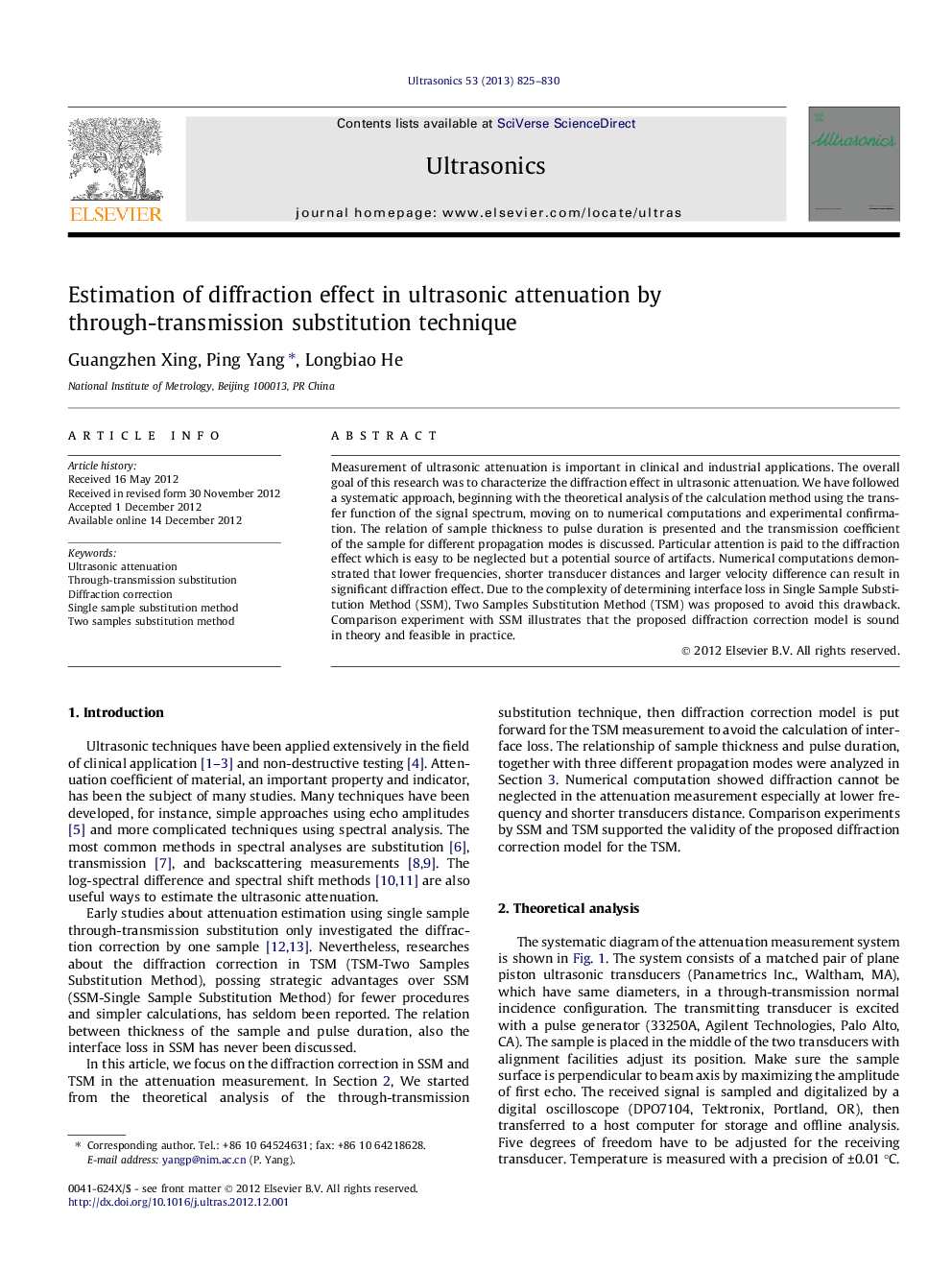| Article ID | Journal | Published Year | Pages | File Type |
|---|---|---|---|---|
| 1758808 | Ultrasonics | 2013 | 6 Pages |
Measurement of ultrasonic attenuation is important in clinical and industrial applications. The overall goal of this research was to characterize the diffraction effect in ultrasonic attenuation. We have followed a systematic approach, beginning with the theoretical analysis of the calculation method using the transfer function of the signal spectrum, moving on to numerical computations and experimental confirmation. The relation of sample thickness to pulse duration is presented and the transmission coefficient of the sample for different propagation modes is discussed. Particular attention is paid to the diffraction effect which is easy to be neglected but a potential source of artifacts. Numerical computations demonstrated that lower frequencies, shorter transducer distances and larger velocity difference can result in significant diffraction effect. Due to the complexity of determining interface loss in Single Sample Substitution Method (SSM), Two Samples Substitution Method (TSM) was proposed to avoid this drawback. Comparison experiment with SSM illustrates that the proposed diffraction correction model is sound in theory and feasible in practice.
► Estimation model for ultrasonic attenuation using SSM is corrected. ► Transmission coefficient in different propagation conditions is analyzed. ► Diffraction correction model in TSM is put forward. ► Numerical computations show the factors causing large diffraction effects. ► Experiments proved the validity of diffraction correction models in SSM and TSM.
